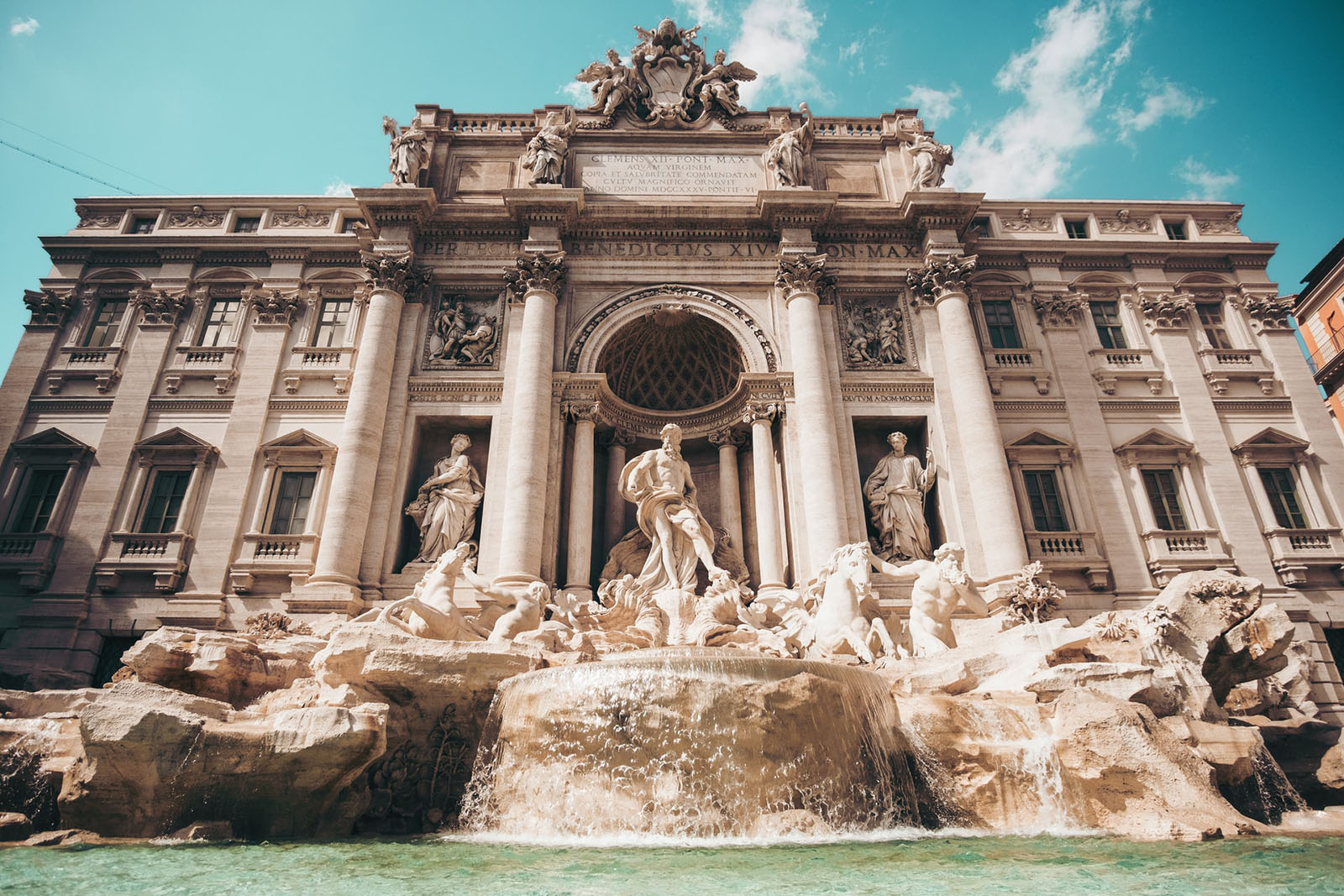Rome is a city of fountains, and no visit to the Eternal City is complete without a journey to its magnificent watery monuments. The first thing that you see as you approach the heart of Rome from any of the main entrances is the imposing Spanish Steps, flanked by two towering Baroque fountains – Bernini’s Fontana della Barcaccia (Fountain of the Old Boat) and Borromini’s Fontana delle Api (Fountain of the Bees). From there it’s only a short walk to some of Rome’s most famous fountains, like Trevi Fountain, or Fontana di Trevi as the Italians say.
Everywhere you turn, there’s another one spouting water into the air, gurgling and chuckling merrily. It’s impossible to pick a favorite – they’re all so different!
There are the ancient sculptures, like the imposing Fontana dei Quattro Fiumi in Piazza Navona or the serene Fontana delle Tartarughe in Villa Borghese. Then there are the grand Baroque ensembles of Gian Lorenzo Bernini, like the majestic Fontana di Trevi or the playful Fontana delle Naiadi near Piazza Barberini.
Fountain of the Four Rivers
Fontana dei Quattro Fiumi
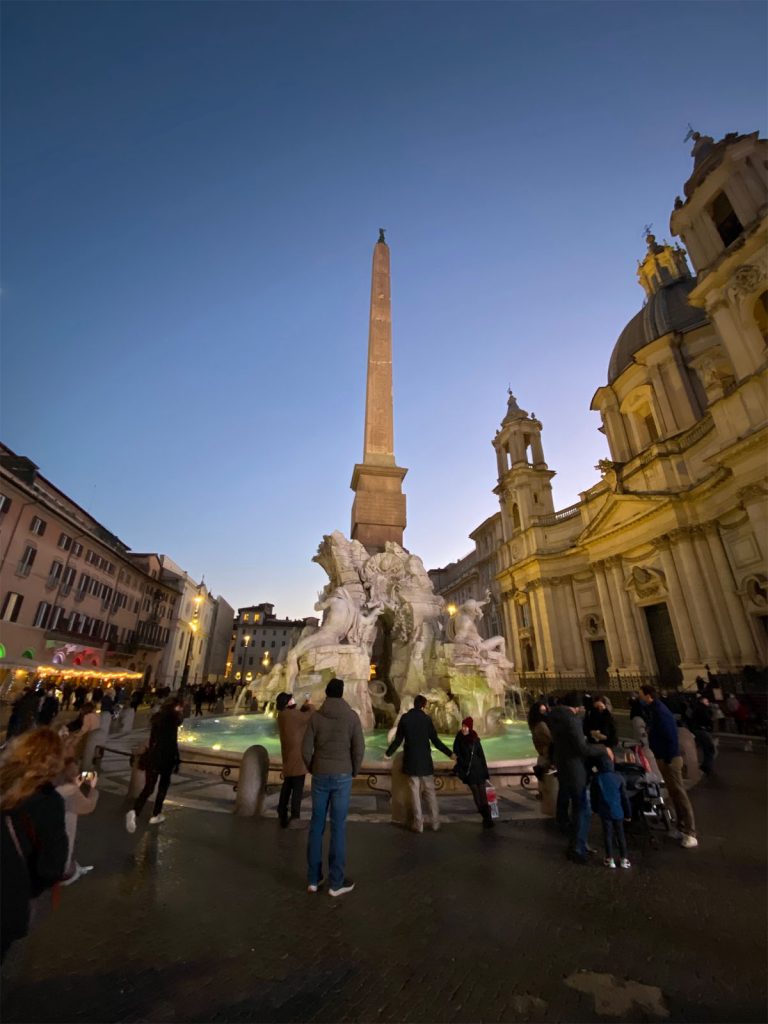
The four rivers fountain at Piazza Navona is one of the most famous and iconic fountains in Rome. This magnificent Baroque fountain was designed by Gian Lorenzo Bernini and built between 1651-1653, to celebrate the end of a long period of drought in Rome. The four river gods – representing the Nile in Africa, the Ganges in Asia, the Danube in Europe, and Río de la Plata representing America – are shown in a state of awe at the sight of Rome, with the obelisk in the center acting as a symbol of the papal power.
Bernini’s jaw-dropping fountain, commissioned by the Pamphilj Pope Innocent IX for the family to transform the piazza into an epic monument to themselves, is without a doubt the Baroque masterpiece.
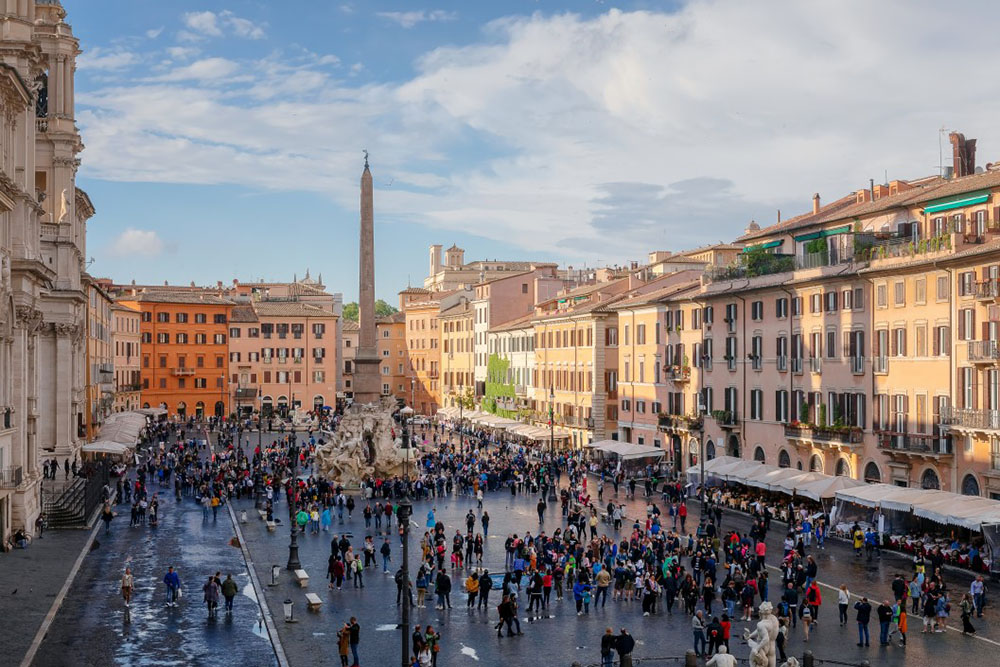
The sculptures that make up the Fountain of the Four Rivers show a variety in character, but when you look at their placement and sizes they all seem to be telling a story. One figure stands out from among these others: he is shown with his face covered in a veil, the Nile itself perhaps fearful over Borromini’s church toppling onto him?
You’re going to love this amazing fountain in Rome. It’s the perfect place to relax and enjoy a glass of wine while taking in the beautiful view.
Trevi Fountain
Fontana di Trevi
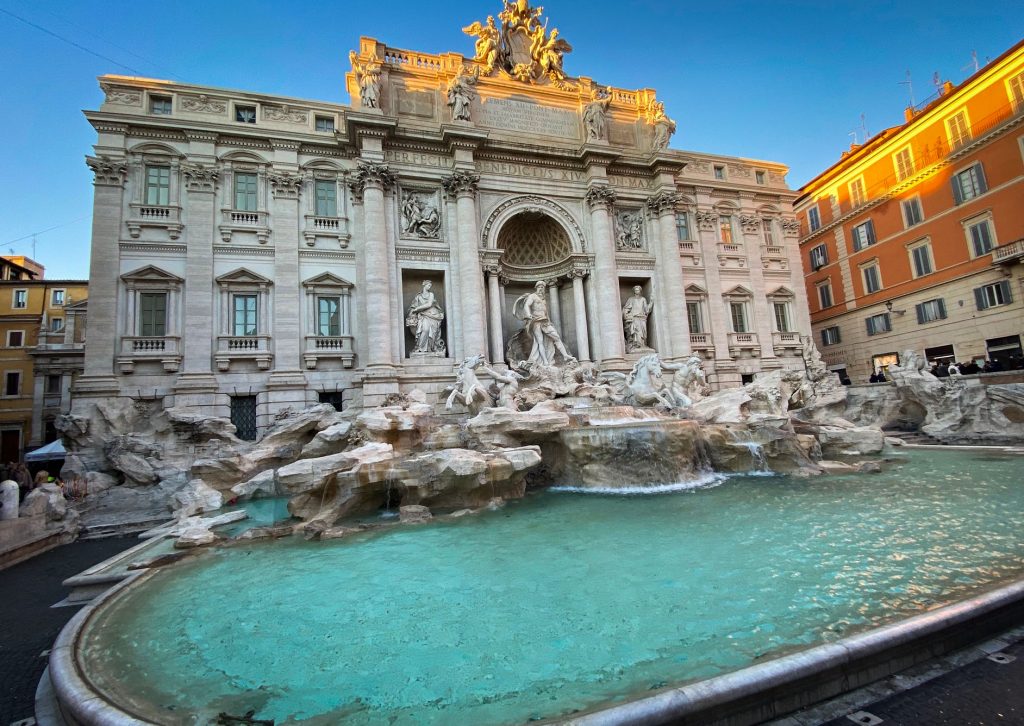
Rome is truly a city of fountains, and no visit is complete without a stop at the Trevi Fountain. The imposing baroque masterpiece is one of the largest and most spectacular fountains in the world, and has been delighting visitors since it was completed in 1762. Legend has it that if you throw a coin into the sea-titan Oceanus’ waters you will be ensured a return trip to Rome, so make sure you have a few euros handy!
The Trevi Fountain is a symbol of Rome and the Italian people love to visit. Building began in 1732, this stunning Baroque workmanship drains water from four different fountains into one large basin before flowing onward toward its final destination – Piazza di Trevi! The site has a long association with Aqua Virgo; an 18th-century aqueduct that once provided important sources for life within ancient City walls but was damaged during Gothic invasions six centuries ago .
Why is it called the Trevi Fountain?
The Latin fountain’s name comes from the Latin term Trivium (three-way intersection), which is also the source of its name. The fountain stands in the middle of De ‘Crocicchi Street, Poli Street, and Delle Muratte Street.
Bernini’s Triton Fountain
Fontana del Tritone
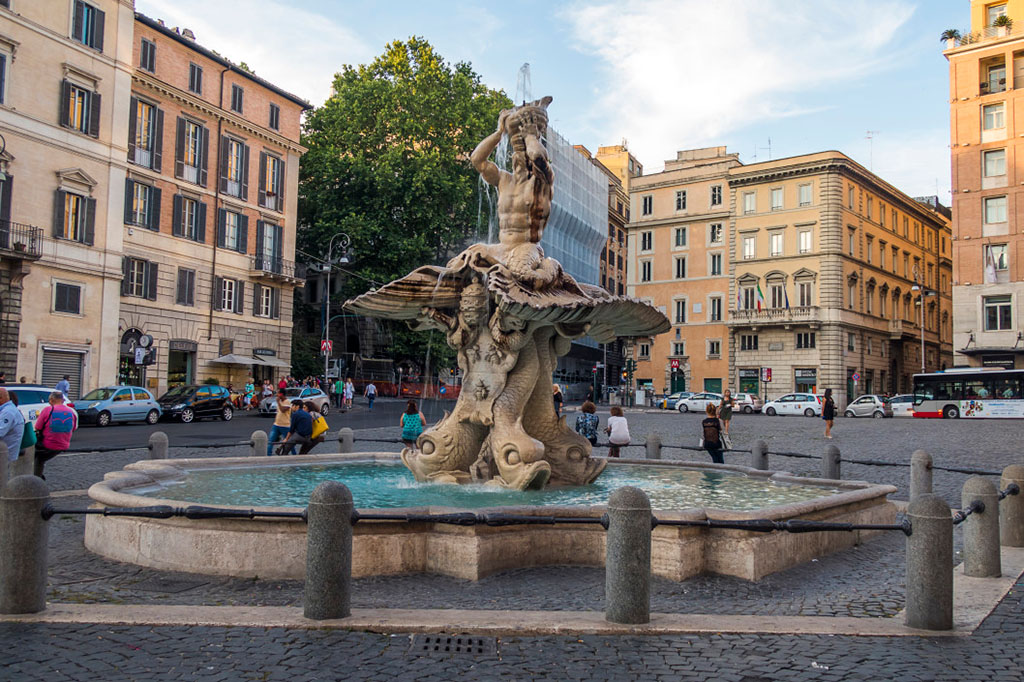
The great Baroque sculptor Gian Lorenzo Bernini’s haunting Fontana del Tritone, commissioned by the powerful Barberini Pope Urban VIII in 1642 stands proudly atop Rome’s Piazza Barberini. A dizzying swirl amidst moving water sends out dolphins and shells which encircle his head as though seeking protection from above before sending it high into blue skies with each blow on its conch shell that sends an eager burst upwards like foam flying outward to cover everything nearby.
The Triton statue was one of Bernini’s first attempts at a free-standing city fountain, and was built as a water outlet for the Acqua Felice aqueduct. The leafy and aristocratic suburb it originally called home is now unrecognizable, one of Rome’s busiest thoroughfares. But the Triton statue stands proudly impervious to the passing centuries, dead marble brought dramatically to life by the chisel of a genius.
The Triton Fountain depicts four dolphins encircling the papal tiara with crossed keys and Barberini bees in their scaly tails.
If you’re looking to get away from the hustle and bustle of Rome, Ostia Antica is the perfect place to go. This harbor city was once the ancient port of Rome, and it’s full of historical ruins that are definitely worth checking out. It’s only about 30 minutes away from central Rome if you take the metro, so it’s a great place to spend a day or two if you’re interested in seeing some of the more ancient sites in Italy.
Turtle Fountain
Fontana delle Tartarughe
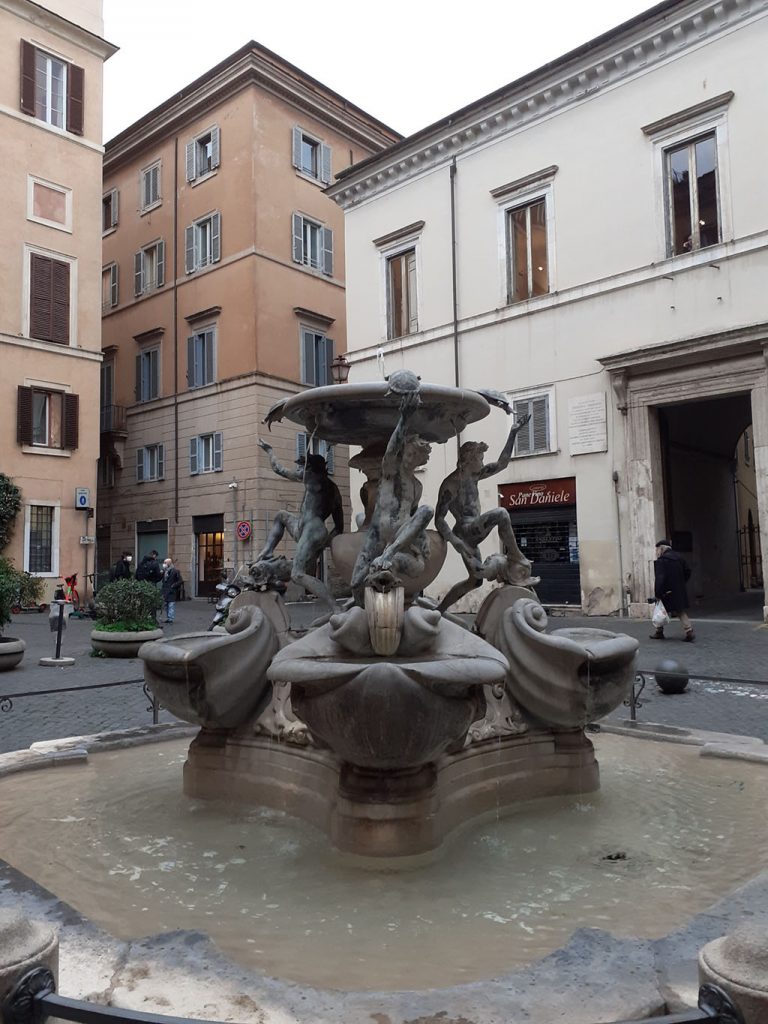
You can’t visit Rome without seeing the Fontana delle Tartarughe! It is one of the most famous fountains in all of Italy.
The fountain is in the Sant’Angelo neighborhood of Rome, on Piazza Mattei. It was designed by Giacomo della Porta and Taddeo Landini between 1580 and 1588. When the fountain was reconstructed in 1658 or 1659, the bronze turtles around the upper basin were added, usually credited to Gian Lorenzo Bernini.
The Fontana delle Tartarughe is one of the first Roman examples of a fountain with more than one element to provide water flow. The central basin has four Tritons blowing into conch shells, from which water flows. Water also flows from the mouths of two dolphins and finally into the upper basin, where the turtles are.
The monument was taken away by the Mattei Duke (who controlled the entrance gates to the quarter) and relocated it his nearby home, despite its purpose of providing water to the inhabitants of the recently-established Jewish Ghetto.
The Ghetto would have to wait 10 years before receiving water through another della Porta fountain, which still exists today in Piazza delle Cinque Scole. Baroque master Gian Lorenzo Bernini added the lovable little turtles climbing into the basin in the 1650s, giving it its name which we know it best by today.
The Turtle Fountain is one of the most popular fountains in Rome and has been featured in many films and TV shows over the years. It’s a must-see on any trip to Rome!
Fontana dell’Acqua Paola
The Acqua Paola Fountain
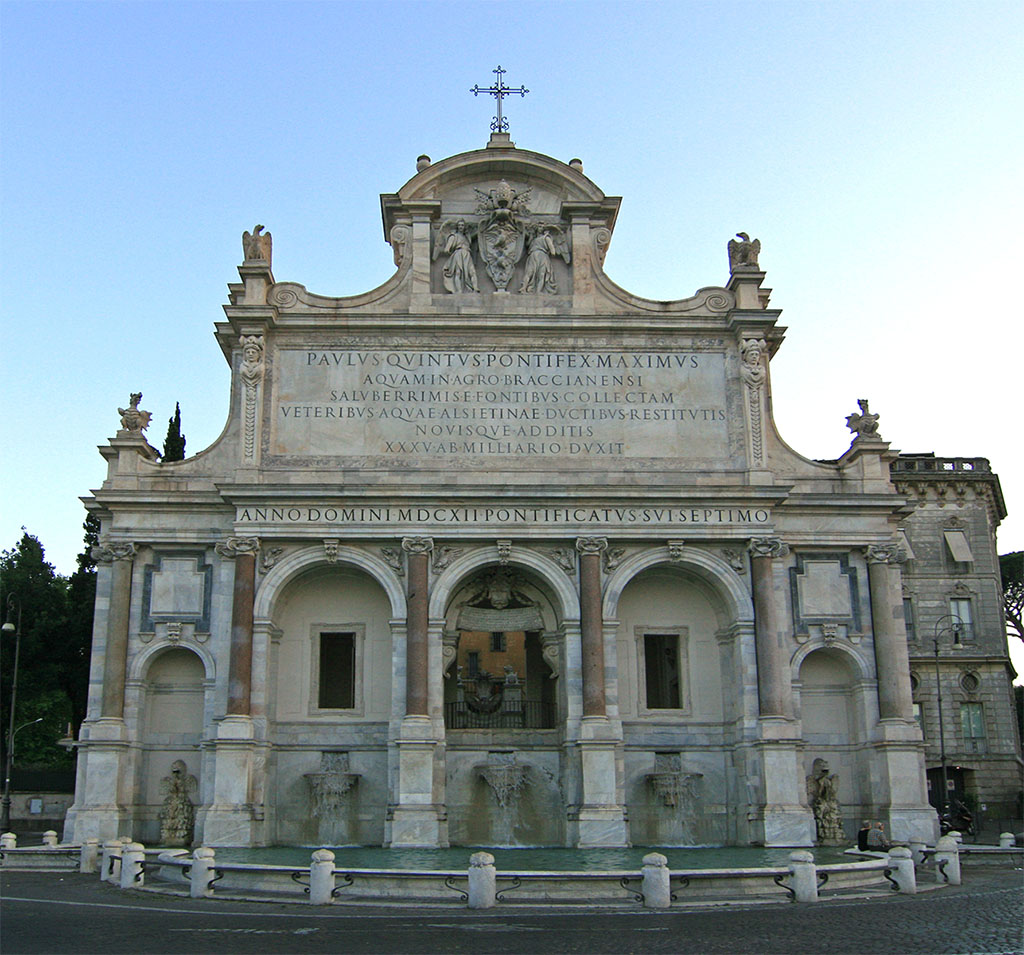
The Fontana dell’Acqua Paola is a magnificent fountain in Rome, overlooking the city from Janiculum hill. Built to commemorate Paul V’s restoration of water supply during his reign as Pope (1605-21), this famous landmark finally brought clean drinking waters into west side Tiber for first time since Roman Mythology!
A large part of the marble used came from The Forum of Nerva, a place that was once bustling with life, but now lies in ruins. The majestic fountain designed by Giovanni Fontana and Flaminio Ponzio welcomed five torrents rushing water into its large basin while using some marble stones from an ancient temple dedicated to Minerva nearby called the Temple Of Minervas On Capitoline Hill. It also contains beautiful pink granite columns which were taken right off Old Saint Peter’s Basilica.
The Fontana dell’Acqua Paola, unlike the Fontana dell’Acqua Felice, had a focus on water rather than biblical figures. Five marble basins overflowed with five powerful springs. Carlo Fontana added an additional semicircular pool for the water that sprang from the marble basins in 1690. Coachmen were prohibited from watering their horses in the fountain after marble posts were built to keep them away, but many local residents found it difficult to resist the pool’s lure. In 1707, an ordinance was passed prohibiting people from bathing in the fountain under these five massive arches.
The Fontana dell’Acqua Paola is an imposing fountain in Rome that is definitely worth a visit. It has some of the most amazing views over the city since the fountain is situated high on Janiculum Hill.
Borromini’s Fontana delle Api
Fountain of the Bees
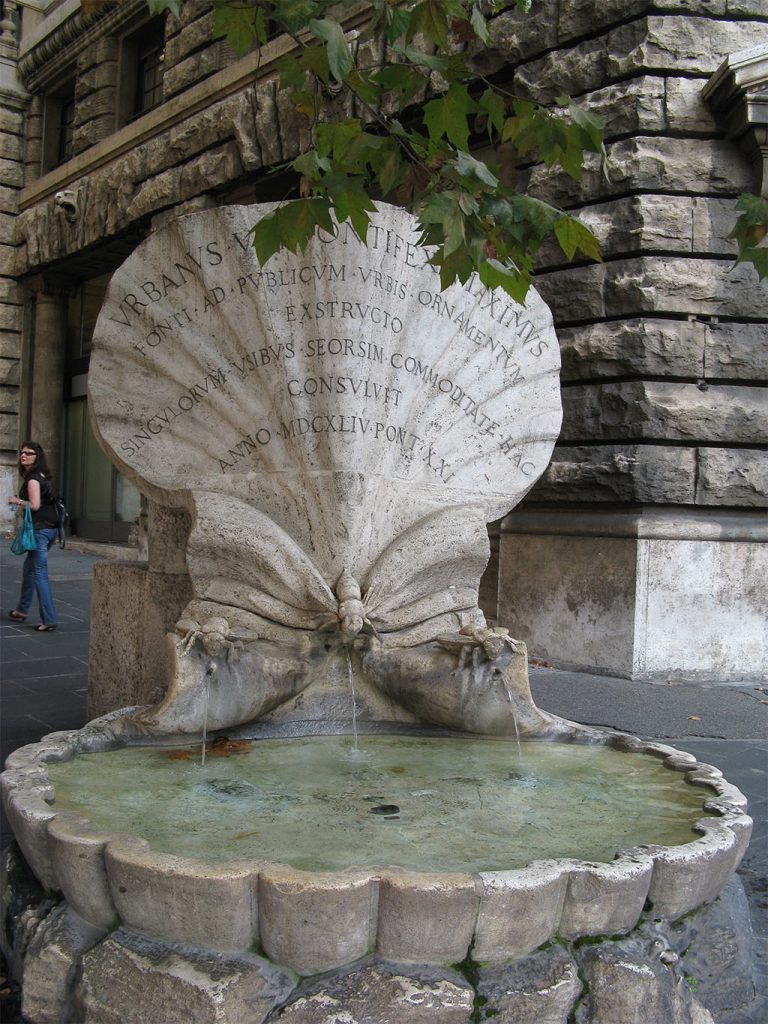
When you think of Italy, it is hard not to picture the Barberini family. The Fountain Of Bees sits at one end and maintains its presence through this beautiful work by Gian Lorenzo Bernini – who else could have such skill?
A diminutive but perfectly formed addition to our list; another creation from him brings us here. The ultra-well-heeled Via Vittorio Veneto where we find its shell-shaped fountain decorated with sculpted aphids instantly recognizable as that maintained solely because all too present within these walls.

